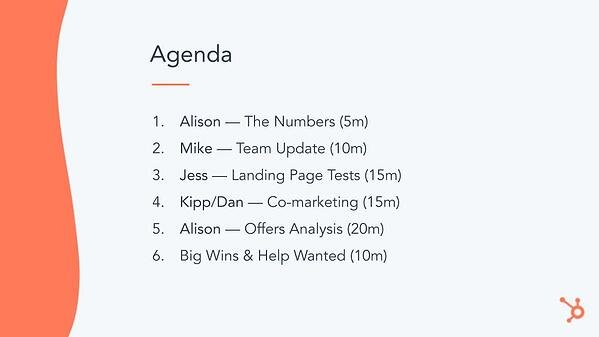Have Long & Unproductive Meetings? Try a Stand-Up Instead

By mbretous@hubspot.com (Martina Bretous)
We’ve all been in meetings that were about 30 minutes too long.
We laugh at “this could’ve been an email” GIFs, sigh, and continue with our days.
Yet, the truth is, unnecessary meetings are costing us way more than just time. Doodle’s 2019 State of Meetings Report estimated that poorly organized meetings are costing U.S. companies $399 billion.
One to two unnecessary meetings a week might seem insignificant, but when you consider a whole year’s worth of meetings, the impact is considerable.
As more companies move toward remote work, the number of meetings are also increasing. So, how can teams ensure their meetings stay productive? Stand-ups are one way to solve that.
To understand why stand-ups exist, you first have to understand the agile methodology.
For a long time, many companies were using a waterfall model for projects. This meant that teams would tackle projects one stage at a time and assume that requirements would stay the same through development. The issue with the waterfall approach is that:
- Teams are not always aligned.
- Unclear requirements often delay progress.
- Testing only begins after development is done.
Agile is built around iterative development, which makes teams more involved in the project’s progress. Teams work in sprints and through stand-ups, issues are addressed quickly and efficiently.
Stand-ups are typically daily. However, some teams have them on a less frequent basis. To maintain the benefits of the process, a stand-up meeting shouldn’t happen less than once a week. The main reason is that it makes it harder to track everyone’s progress and address roadblocks as they appear.
We also know that business priorities can change quickly. Having stand-ups too far apart can create information gaps between teams and slow delivery timelines.
Stand-Up Meeting Format
During a stand-up meeting, each team member should answer the following questions:
- What have you worked on since the last meeting?
- What are you working on now?
- Are there any blockers impeding your progress?
Regular updates help team members and leaders track everyone’s progress and assess what needs to be done to meet sprint goals.
Let’s use my role as a writer on a blog team as an example.
During a stand-up, here’s what I would say: “Yesterday, I finished writing X article and completed my second draft for Y article. Today, I will work on uploading Y article to the content management system (CMS) and will draft two outlines for new articles. My current obstacle is that I lost access to the CMS and need to connect with someone from IT to regain access.”
From there, my manager could suggest connecting me with a specific engineer on the IT side and follow up with me after the stand-up. Following this format gives everyone involved in the meeting a clear overview of what you’re working on and how that will affect the sprint.
Stand-Up Meeting Best Practices
1. Keep the meeting short.
Source:: HubSpot Blog









